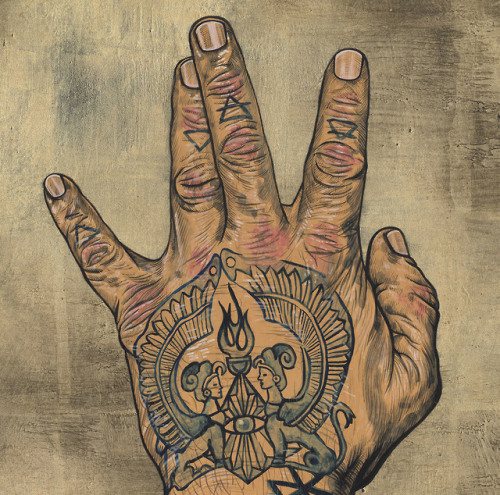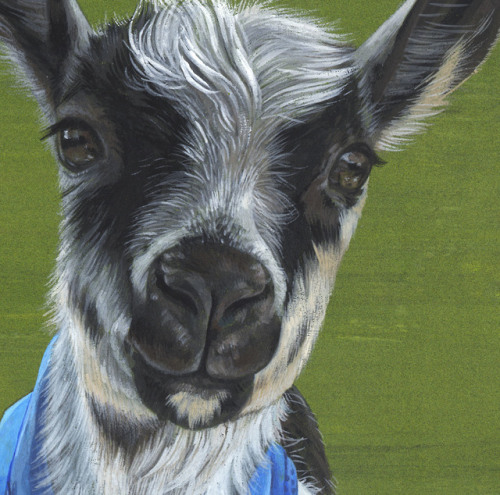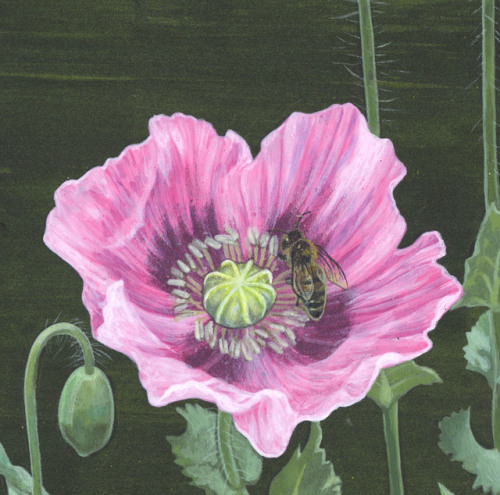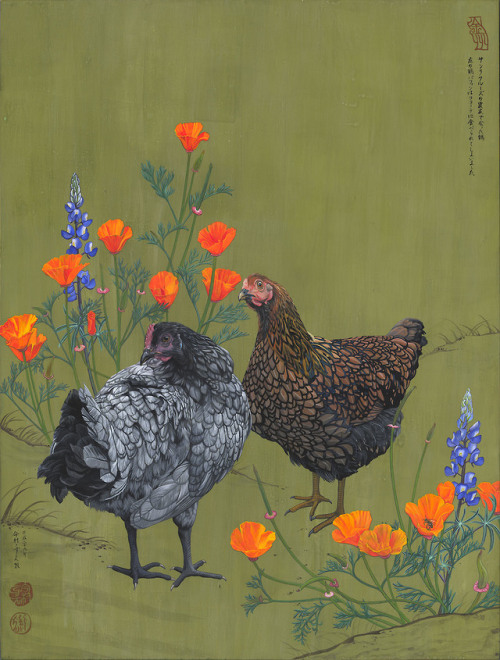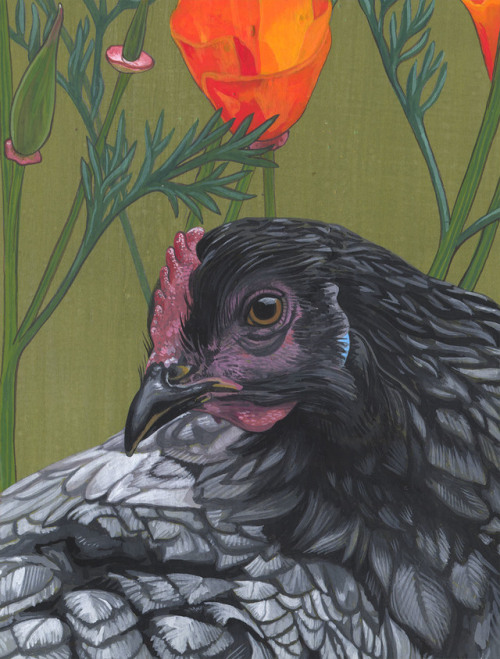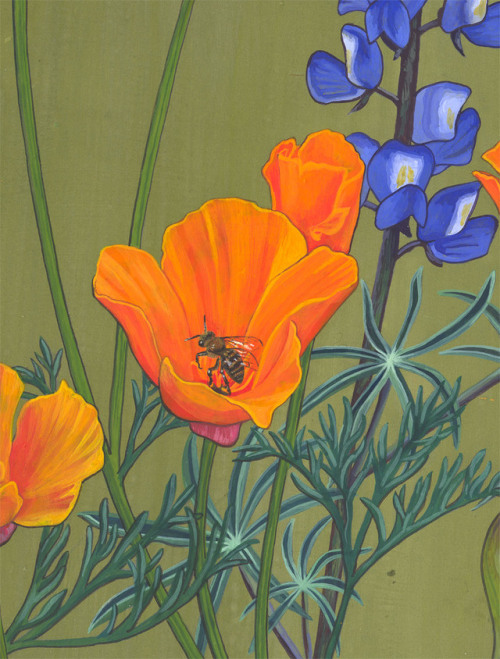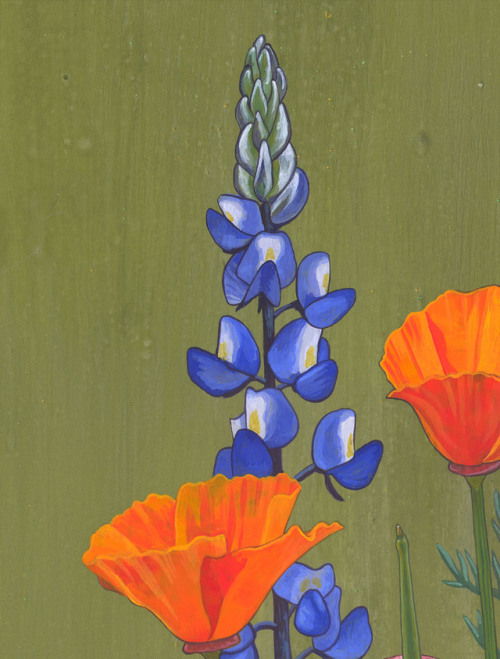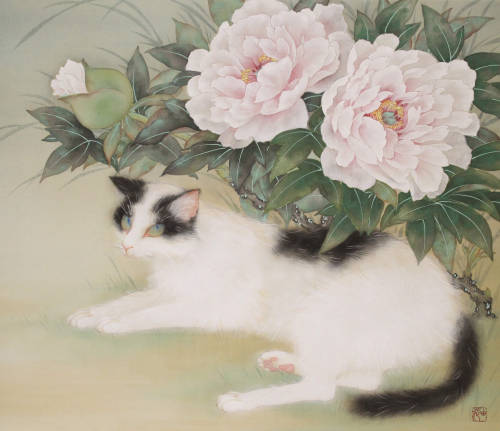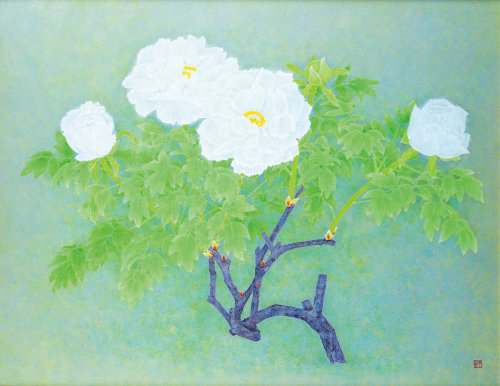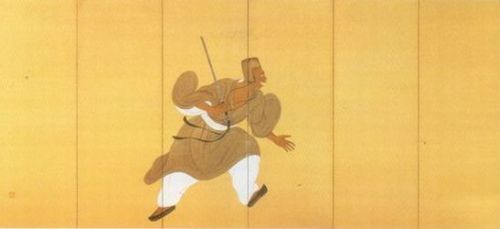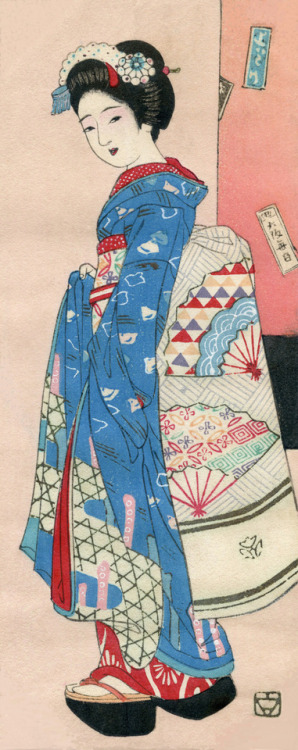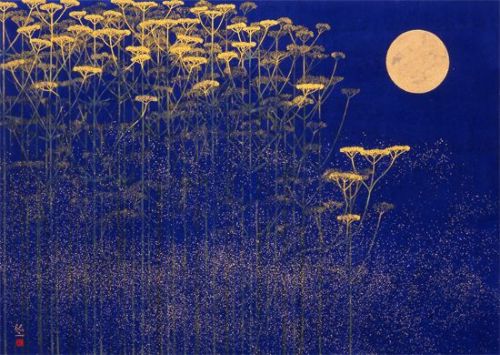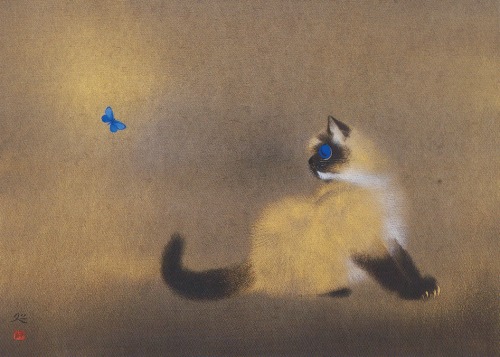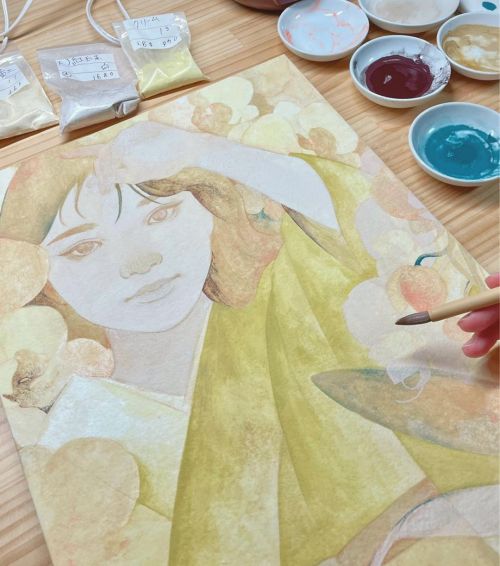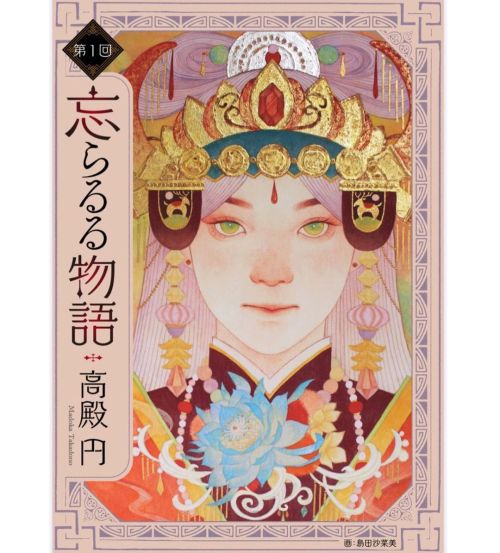#nihonga
“Super Bloom 2017″
12 x 9 inches
Nihonga painting on board
Kozy’s first painted depiction of one of California’s tremendous wildflower “Super bloom” events, based on one of our visits to a spot that happened to exploding particularly magnificently in 2017. We felt like we were in some dreamy psychedelic fantasy movie. I just didn’t seem real. It was an ideal subject for a painting for our exhibition “The Golden State” at Gregorio Escalante Gallery.
Post link
“Instant Bliss”
18 x 24 inches
Nihonga painting on board
2017
One of the paintings kozy made for our 2017 exhibition “The Golden State” at Greg Escalante’s Gregorio Escalante Gallery in Los Angeles. kozy was exploring the use of traditional Japanese painting medium and techniques for this series of paintings about our Los Angeles life. “Instant Bliss” touches on things we turn to for a quick outlet for relief - from stress, from pain, or whatever else - personified by a baby goat (due to kozy’s obsession with watching goat videos) and opium poppies from our garden (due to, well, opiates of course).
Post link
“RIP Puffin”
18 x 24 inches
Nihonga painting on board
2017
Created for our 2017 exhibition at the late Greg Escalante’s Los Angeles Gallery for our double exhibition “The Golden State”. Purchased by one of our favorite collectors, Eric Ayzenberg.
Kozy made this painting of some of our friends’ chickens from their homestead in Santa Cruz, CA. Unfortunately the hen on the left, Puffin, was later eaten by a coyote. Rest in peace, Puffin! We recently went to visit them again and they currently have 3 ducks, 7 turkeys, and 29 chickens!!!
Post link
Taguchi Yuka aka田口由花aka Yuka Taguchi (Japanese, b. 1992, Gifu, Japan) - 華と猫 (Flower and Cat), 2017, Paintings: Mineral Pigments on Silk
Post link
Watanabe Nobuyoshi aka渡辺信喜aka Nobuyoshi Watanabe (Japanese, b. 1941 (Showa 16), Kyoto, Japan) - 1: 夏草 (Summer Grass) 2: 桜図aka Sakurazu (Kai) 3: 白牡丹 (White Peony), Japanese Paintings
Post link
furosaki-byōbu 風炉先屏風 - “ Princess Kono hana sakuya 木花咲耶” (1929), de
Dōmoto Inshō 堂本 印象 (1891 - 1975).
Post link
Creeping Woodsorrel included in Bansho Zukan (Picture Book of All in the Universe) published in 1901 by Bunshichi Kobayashi
Post link
「朝顔」
(morning glory)
454×158mm
color on paper
2019
江戸の頃からあまり改良されていない朝顔の種。少し巻き気味の葉と蔓のバランスが美しく思えた。
One of my favorite flowers in my favorite paint technics ❤️
Post link
Modern Japanese Art.
The idea of modern art and modernity are premised on metaphors of space and time. Art history as a product of modernity carved up the world in the same way Imperial nation-states did. Japanese art was seen as “primitive” and its nearest equivalents were near Near-Eastern and African art. While Japanese art was a “pale pastiche” of European art, Japanese art and artifacts had been making their way to Europe as “decorative” objects and “primitive” Japanese art was very influential to European “masters”.
-Oscar Wilde observed in 1891, that Japan, for the west was merely an invention, a purely aesthetic fancy.
- Maurice Denis argued that painting oscillates perpetually between invention and imitation.
Japonisme is an oversimplified term for the influence of the arts of Japan on west. From the 1860s, ukiyo-e, Japanese wood-block prints, became a source of inspiration for many European impressionist painters in France and elsewhere, and eventually for Art Nouveau and Cubism. Artists were especially affected by the lack of perspective and shadow, the flat areas of strong color, the compositional freedom in placing the subject off-centre, with mostly a low diagonal axis to the background. Unlike other varieties of Orientalism, Japonisme mostly involved Western artists using elements of Eastern styles in works showing their own culture; if only because of the difficulty of travel, there were relatively few artists attempting Eastern scenes in a Western style.
Painting #1&2
Claude Monet Haystack, snow effect, (1891) & Haystacks Giverny, the evening sun, (1888). Compare to paintings #3&4, From the series Thirty-six Views of Mt. Fuji, Woodblock print by Katsushika Hokusai (1830’s). Also compare #5 Takahashi Yuichi’ Courtesan (1872) and #6 Vincent van Gogh The Courtesan (1887).
From the 1870’ to the mid-1900’s the structure of Japanese modern art and its institutions were shaped largely in response to Japonisme’s compulsion towards national and ethnic essentialism. Around 1910-1920 a younger generation of artists saw Japan’s influence on the work of western painters such as Monet and Van Gough. They saw this as an opportunity for their art to transcend national boarders. During this time the the Meiji government was pushing to modernize by modelling herself on the West.
Nihonga (Neo-traditional Japanese painting -both aesthetic and technique) and Yoga (Western style painting, specifically oil painting) became the two parallel streams of Japanese painting the originated and crystallized in the Meiji period. These two schools fought to control the direction modern painting would take in the future. It wasn’t really until the shift from the Meiji to Taisho period that Yoga became a naturalized art along side Nihonga. Modernism in Taisho-period Japanese art ways in many ways a response to the “cultural boomerang” of European Japonisme returning to Japan. For Japanese artists and critics, European Japonisme was proof that after many centuries, in the modern period of the arts the East and West had begun to converge.
Painting #7 Japan’s “pale pastiche” of western art. #7 Yorozu Tetsugorō’s Nude Beauty (1912) Oil on canvas.
Paintings #8 & #9 Nihonga and Yoga respectively. #8 Takahashi Yuichi’s Tofu (1888) & #9 Okada Saburosuke’s Kimono with Iris Patterns )1927) Oil on canvas.
Post link
When scabious patrinia blooms (flower series) byReiji Hiramatsu (Japanease, born 1941), 2006.
Post link

New Leaves (1915)
Gyoshū Hayami (1894-1935)

Snow (1940)
Uemura Shōen (1875-1949)
***
Work in progress
・
新しい制作開始!
夏頃に展示予定です
*
#art #artwork #artlovers
#wip #instagood #flowers
#japanesestylepainting
#japanesepainting #nihonga
#instaart #artgram #portfolio #gallery
#drow #drowing #paint #painting
#sanartlife #shimadasanami
#美術 #アート #制作過程
#島田沙菜美 #日本画
https://www.instagram.com/p/CaUFyFpv11v/?utm_medium=tumblr
Post link
***
Art Work
・
25日より連載が開始された高殿円先生の「忘らるる物語」の扉絵を描かせていただきました。
素敵な機会をいただけてとても光栄です✨
一緒に楽しんでいただければ幸いです◎
*
全てを奪われた少女がある女性と出会い、過酷な運命に立ち向かうファンタジー小説です。
BOOK☆WALKER文庫・ラノベ読み放題サービスでお読みいただけます。
毎週月曜・木曜0時、週2回更新です!
⇒https://bookwalker.jp/subscription/
*
#art #artwork #artlovers
#wip #instagood #flowers
#japanesestylepainting
#japanesepainting #nihonga
#instaart #artgram #portfolio #gallery
#drow #drowing #paint #painting
#sanartlife #shimadasanami
#kadokawa #高殿円 #小説 #小説紹介
#扉絵 #美術 #アート #制作過程
#島田沙菜美 #日本画
https://www.instagram.com/p/CWvh2dzv2Dc/?utm_medium=tumblr
Post link



